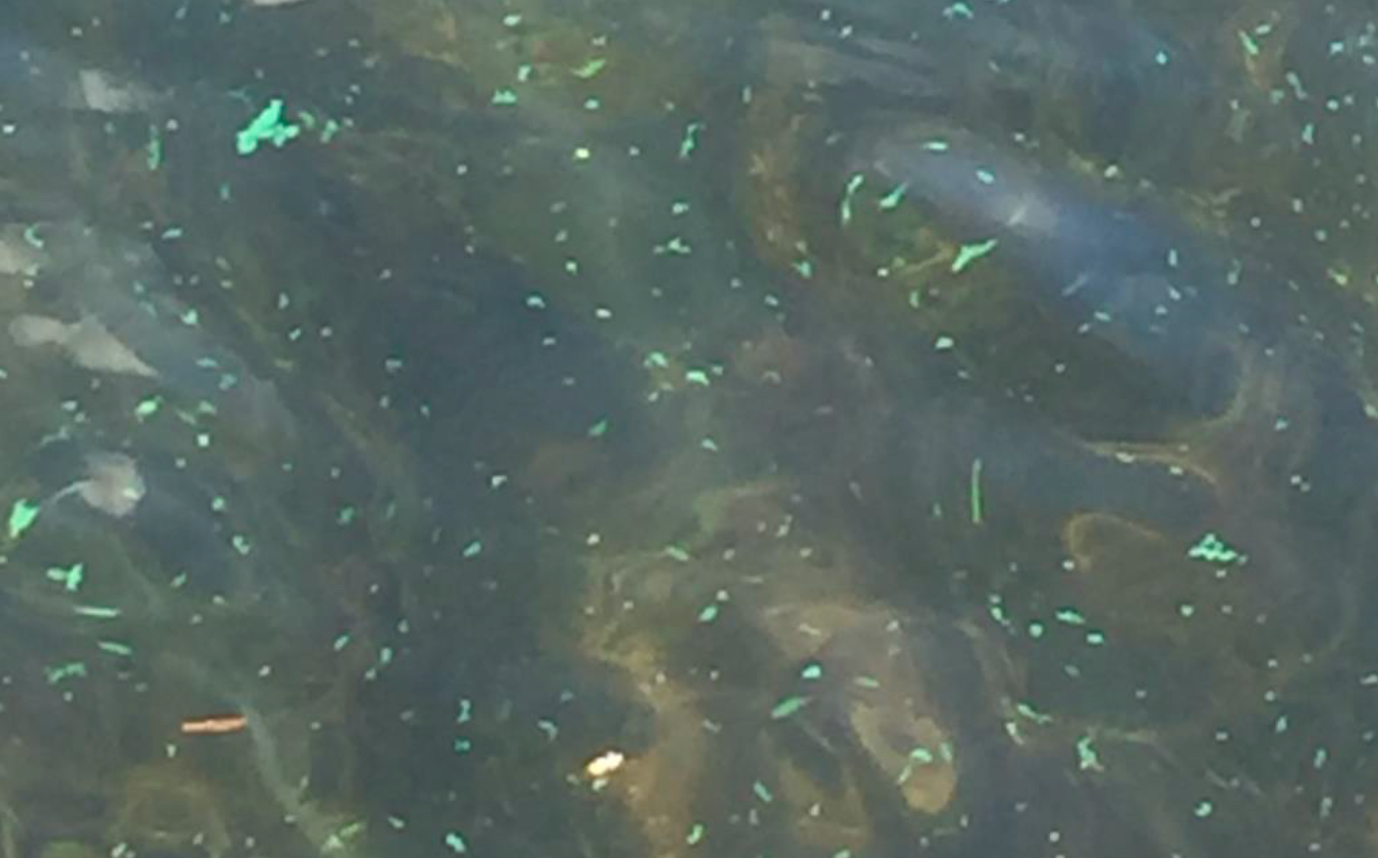Concord—August 26, 2021—A cyanobacteria bloom has been observed on the Danforth Ponds. The New Hampshire Department of Environmental Services (NHDES) sampled the shoreline at Danforth Pond on August 25. Cyanobacteria cell counts were 35,000 cells/ml of cyanobacteria (Planktothrix and Dolichospermum) in areas that appeared mostly clear. However, conditions rapidly change each day, and photo evidence and reports suggest that higher concentrations are observed at different times of the day.
Watch for blue-green flecks which can represent thousands to millions of cells. NHDES has issued a cyanobacteria bloom advisory for those who use the waterbody for recreation. The advisory is not based on a toxin evaluation and is intended as a precautionary measure for short term exposure.

Cyanobacteria has been reported in Danforth Pond in recent days.
Surface blooms can rapidly change and accumulate in various locations around a waterbody. Please continue to monitor your individual shorelines for changing conditions. NHDES advises lake users to avoid contact with the water in areas experiencing elevated cyanobacteria cell conditions, also known as a bloom. NHDES also advises pet owners to keep their pets out of any waters that have a cyanobacteria bloom.
Cyanobacteria are natural components of water bodies worldwide, though blooms and surface scums may form when excess nutrients are available to the water. Some cyanobacteria produce toxins that are stored within the cells and released upon cell death. Toxins can cause both acute and chronic health effects that range in severity. Acute health effects include irritation of skin and mucous membranes, tingling, numbness, nausea, vomiting, seizures and diarrhea. Chronic effects may include liver and central nervous system damage.
Be cautious of lake water that has a surface scum, changes colors, or appears to have green streaks or blue-green flecks aggregating along the shore.
The cyanobacteria advisory went into effect on August 26, 2021 and will remain in effect until NHDES confirms that cell concentrations of the bloom have subsided.
Visit the NHDES Beach Program website for photos and more information about cyanobacteria at: Harmful Algal Blooms | NH Department of Environmental Services. Updates on cyanobacteria advisories may be obtained at: http://www4.des.state.nh.us/WaterShed_BeachMaps/WaterShed_BeachMaps.aspx
Follow the Beaches twitter feed: https://twitter.com/NHDES_Beaches
If you notice anything resembling cyanobacteria, please refrain from wading, swimming, or drinking the water. Keep all pets out of the water and contact NHDES immediately. Please call NHDES to report a cyanobacteria bloom at (603) 848-8094 or email HAB@des.nh.gov.
